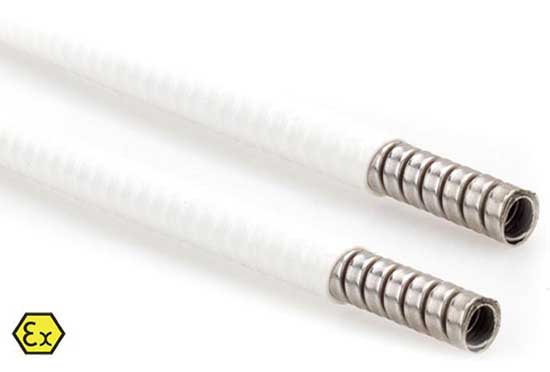Sep. 13, 2022
Flexible metal conduit (FMC, informally called greenfield or flex) is made by the helical coiling of a self-interlocked ribbed strip of aluminum or steel, forming a hollow tube through which wires can be pulled. FMC is used primarily in dry areas where it would be impractical to install EMT or other non-flexible conduit, yet where metallic strength to protect conductors is still required. The flexible tubing does not maintain any permanent bend, and can flex freely.

ATEX Flexible Metal Conduit
Flexible metal conduit (FMC) has a spiral construction that enables it to snake through walls and other structures. FMC protects electrical wiring in commercial and industrial buildings.
FMC may be used as an equipment grounding conductor if specific provisions are met regarding the trade size and length of FMC used, depending on the amperage of the circuits contained in the conduit. In general, an equipment grounding conductor must be pulled through the FMC with an ampacity suitable to carry the fault current likely imposed on the largest circuit contained within the FMC.
Liquid tight flexible metal conduit (LFMC) is a special type of FMC that has a plastic coating. The interior is similar to FMC.When used with sealed fittings, it becomes watertight.
Products include all types of FMC and LFMC identified in the National Electrical Code® (NEC) and complies with Underwriters Laboratories (UL) and CSA Standard UL 360/CSA C22.2 No. 56-17 Flexible Metal Conduit and Liquid-Tight Flexible Metal Conduit.















